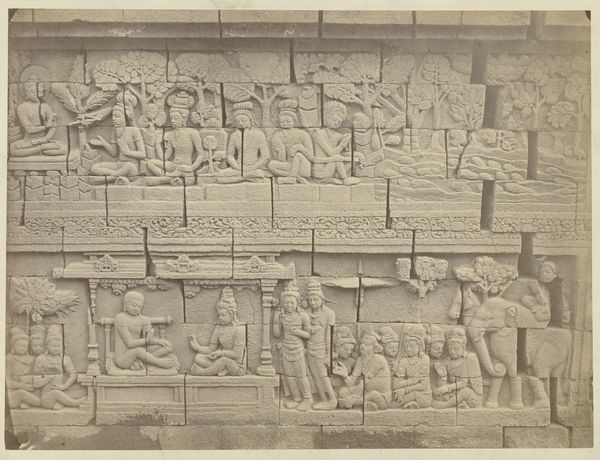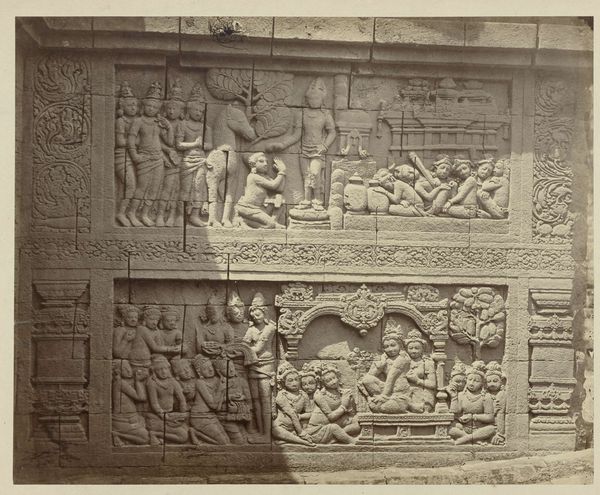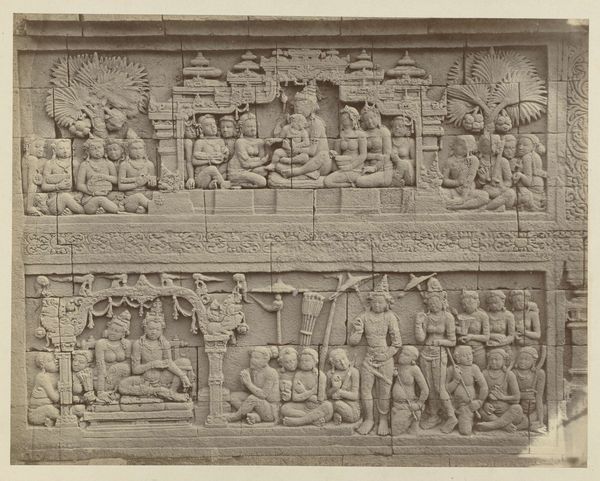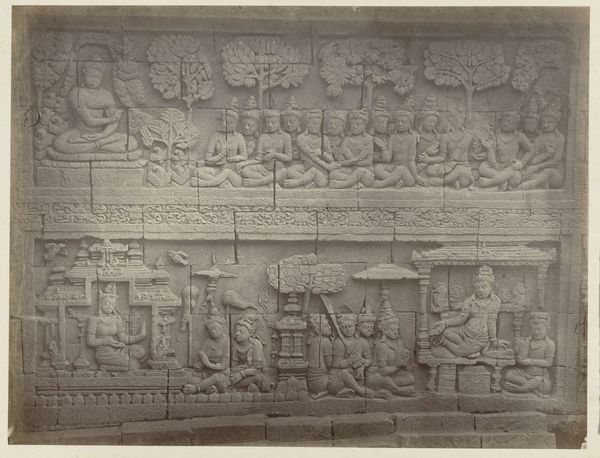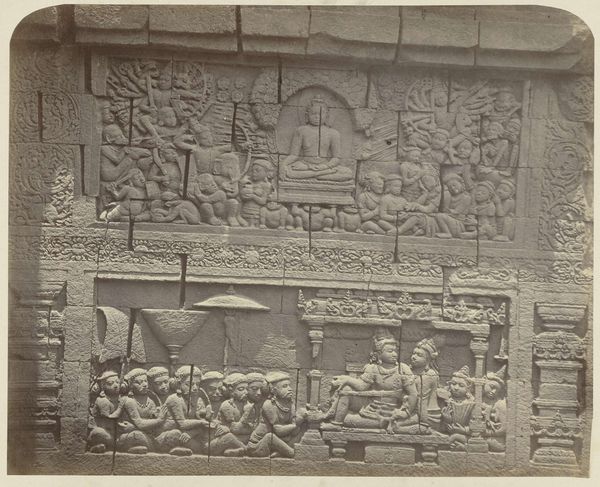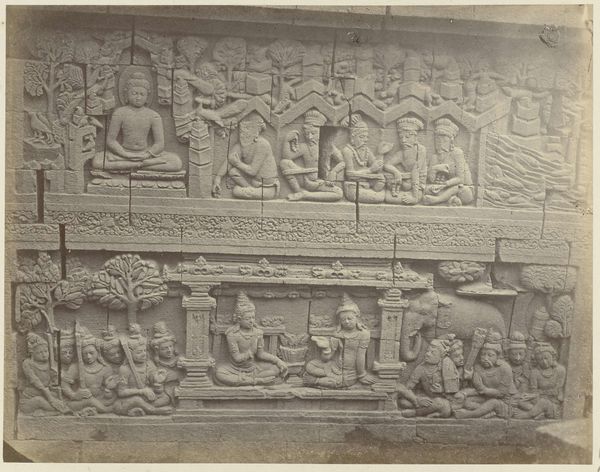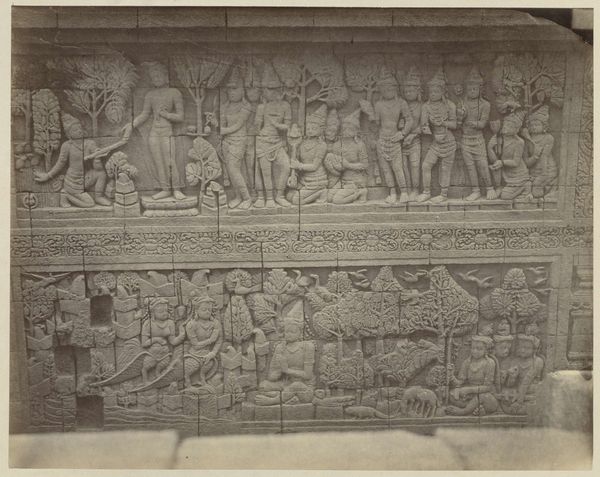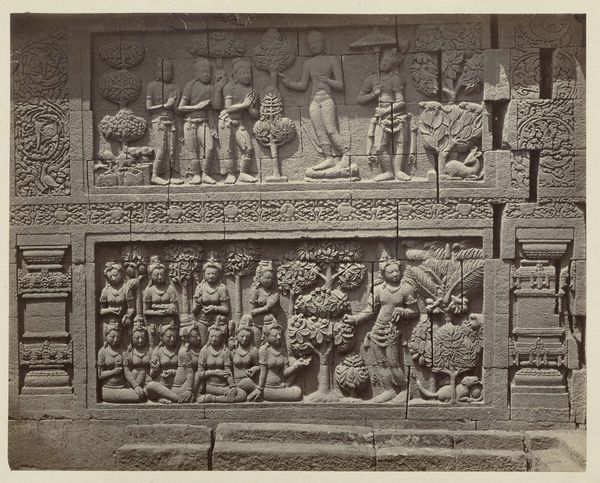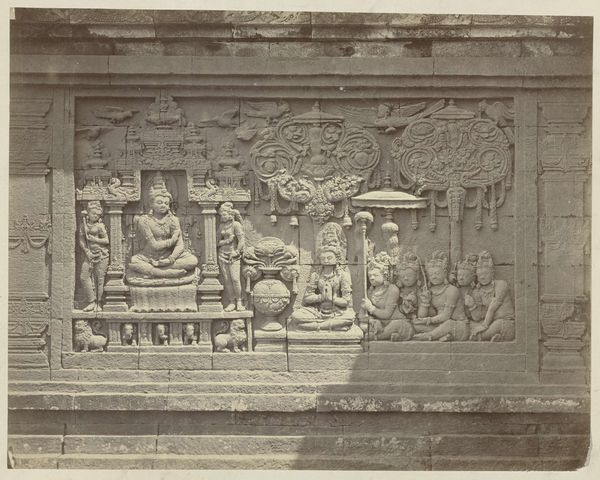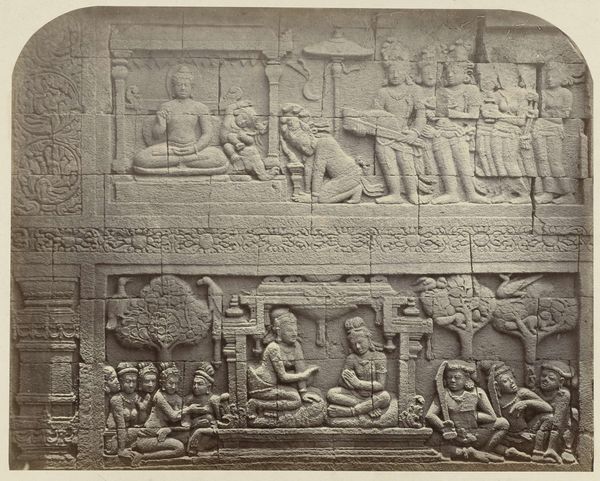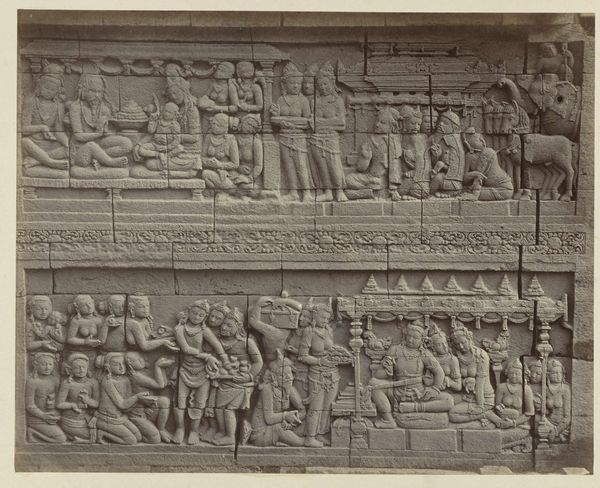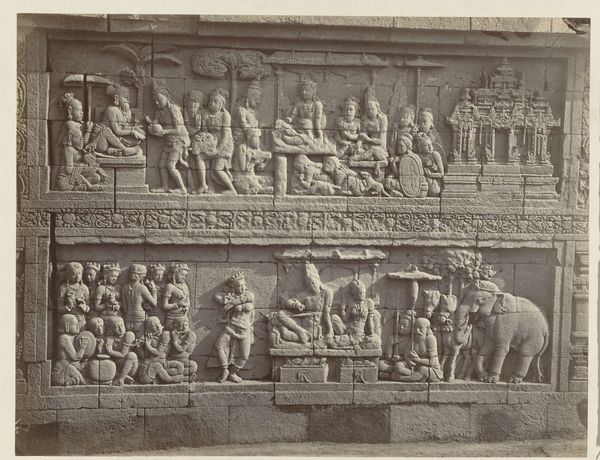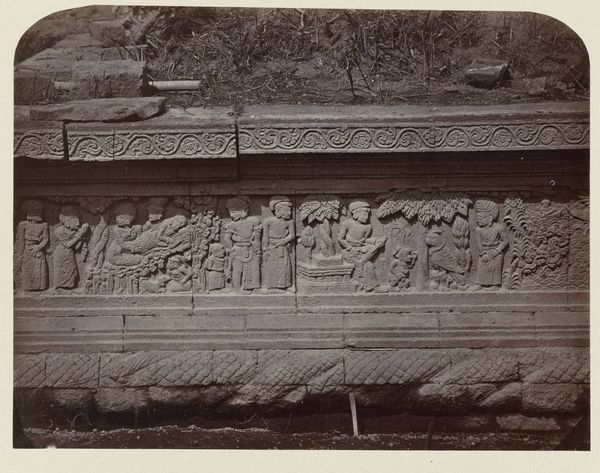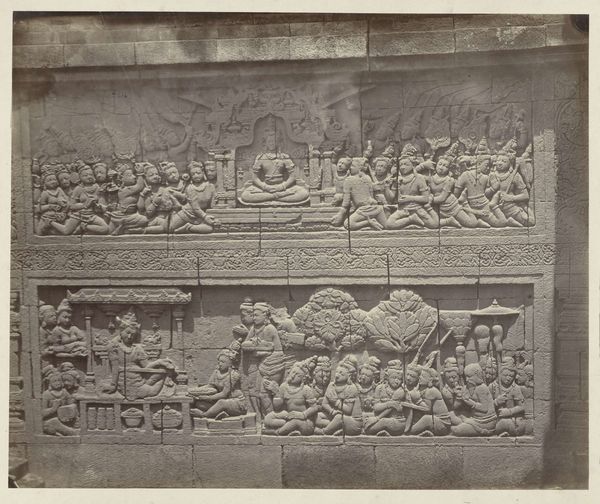
gelatin-silver-print, relief, photography, gelatin-silver-print
#
gelatin-silver-print
#
asian-art
#
relief
#
form
#
photography
#
gelatin-silver-print
Dimensions: height 300 mm, width 240 mm
Copyright: Rijks Museum: Open Domain
Editor: Here we have Isidore Kinsbergen's gelatin silver print from around 1873-1879, capturing a bas-relief on the north wall of Borobudur. The level of detail achieved through photography is remarkable. What strikes you about this piece? Curator: Well, I find it fascinating to consider this photograph not just as a document of ancient craftsmanship, but also as an object produced through its own material conditions and labor. Consider the mining of the silver, the factory production of the gelatin emulsion, the photographer's process and equipment... Editor: I see. So you're thinking about all the work and resources that went into even creating this image of the relief. Curator: Exactly. And then consider the labor involved in creating the bas-relief itself. What kind of tools were used, and what was the social status of the workers carving those figures into the stone? Photography here almost democratizes it, allowing wider consumption and potentially altering the value placed on the original craft. Editor: That's an interesting point. By creating a reproducible image, doesn’t it almost diminish the unique value of the original carving? Curator: Perhaps. Or, conversely, it elevates it. Consider how photography influenced the Arts and Crafts movement - a return to handcrafted items as a reaction against industrial production. This image creates new markets, impacting value and meaning. We must consider the whole network of creation and consumption, right? Editor: That does put things into a new perspective. Thinking about the entire life cycle of both the photograph and the sculpture. Thanks for opening my eyes to those material considerations. Curator: My pleasure. Looking at art through the lens of material production always enriches our understanding.
Comments
No comments
Be the first to comment and join the conversation on the ultimate creative platform.
